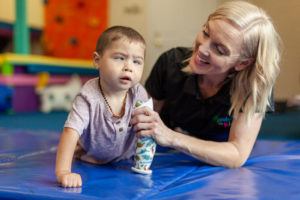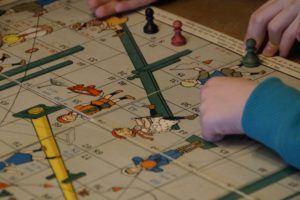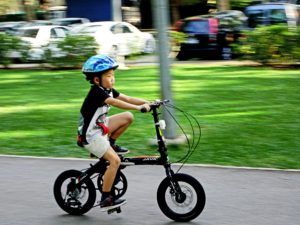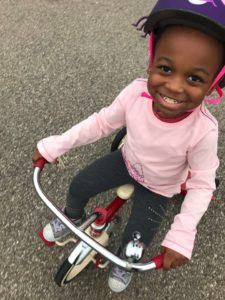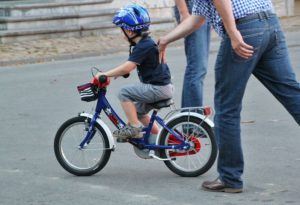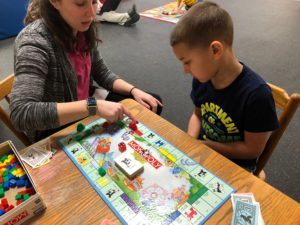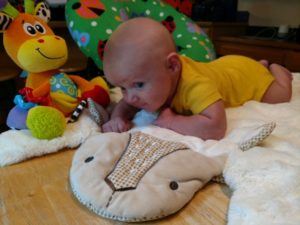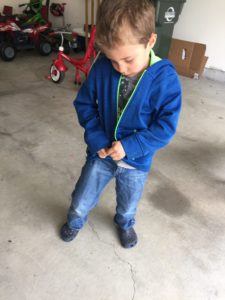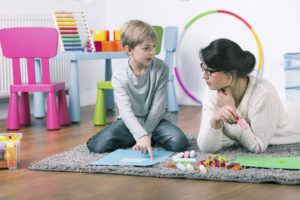child development
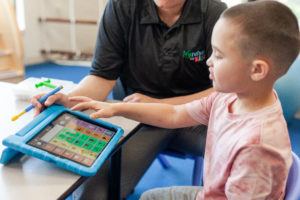
Applied behavior analysis, also known as ABA or ABA therapy, is a research-based treatment that has been shown to be effective for individuals with a variety of behavioral and developmental conditions.
It is more comprehensive than early intervention and is most commonly used to address problematic or dangerous behaviors and to improve skill deficits for individuals that have been diagnosed with autism.
Although ABA therapy can be effective for a wide range of individuals, years of research show that the strategies and processes to be the most effective for children before the age of five.
Early intervention can reduce behaviors that may have become engrained or routine. Early intervention also has greater chance of building pivotal developmental skills. Through a comprehensive approach, early intervention can include a focus on communication, language, play, self-help/adaptive, learning readiness, and social skills, as well as a reduction of challenging behaviors.
Programming is research based and tailored to each child’s specific needs and should include the adults in the child’s life to encourage skill growth and generalization outside of therapy sessions.
Starting early intervention can mean you’re catching and correcting issues at a critical point in the development of your child, changing their developmental path.
Written By:
Adrienne Oaks, M.Ed.
BCBA, COBA / Clinical Director

Outpatient Therapy Services
*Children of any age are referred to ABC Pediatric Therapy by their physician due to concerns with gross motor, fine motor and/or speech and language skills.

*Children are evaluated by the Therapist who is trained and specializes in the area of concern (Physical Therapist, Occupational Therapist or Speech Language Pathologist) using a functional evaluation. The family is involved in setting goals in the best interest of the child.
*After therapy is recommended, the Therapist shares the strengths and goal areas for the child with the parent and determines with the parent priorities for functional goals.
*Direct, one-on-one therapy is provided by the Therapist in the outpatient center with the parent or caregiver present; a home exercise program is established for optimal carry-over at home. Visits are scheduled based on the needs of the child, typically one time per week and up to five times per week if necessary.
*The family’s insurance company is billed for the therapy sessions; alternative funding is available as needed.
**A therapist is college educated on normal and abnormal child development often having a masters or doctorate degree.
Early Intervention Services
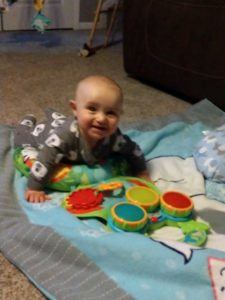
*Children (ages birth through three years old) are referred to Help Me Grow by anyone having a concern with the child’s development in any area – behavior, gross motor, fine motor, speech or cognition. (This could be a parent or physician)
*Children are evaluated by at least two different specialists using a standardized test to determine eligibility for services.
*After eligibility is determined, the family is involved with the team in establishing an IFSP (Individualized Family Service Plan) which identifies the family’s primary concerns. Based on these concerns, outcomes (goals) are established and a PSP (Primary Service Provider) is determined. (These outcomes are supposed to be related to the family’s daily routines – i.e. meal time, bath time, etc.)
*The PSP, often a Developmental Specialist*, rather than a Therapist (PT, OT or SLP) sees the child at home or other natural environment (such as daycare or babysitter). Visits are typically scheduled monthly. If available, a licensed therapist may consult and advise the Developmental Specialist on how to encourage development.
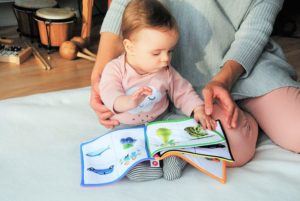
*The coaching model is used – the PSP coaches the family to carry through the activities vs. providing one-on-one therapy.
*The first 55 hours of services in a year are provided at no cost to families. If more than 55 hours are needed, the families may then be charged for additional services through the family’s insurance or other means.
*Developmental Specialist: A professional, certified by the Ohio Department of Developmental Disabilities, trained to develop and implement a program which works to enhance a child’s developmental needs birth-age 3.
If you feel outpatient service would best meet your child’s developmental challenges, reach out to us at http://www.abcpediatrictherapy.com. We are here to educate you and inspire your child.
Read More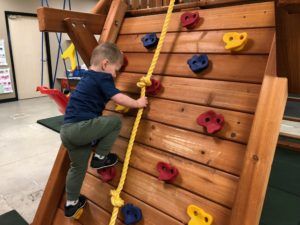
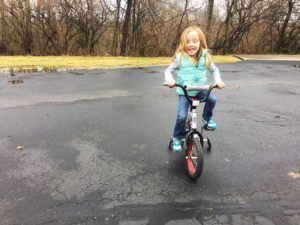

Being a parent in today’s world can be overwhelming and frankly scary. We are constantly being reminded of the ‘bad’ things that could happen to our own precious children due to being surrounded by social media. We are also more aware and educated about development which is a blessing but can lead to anxiety and worry.
As a pediatric physical therapist, it is not uncommon for me to see children who are diagnosed with developmental delay or have sensory deficits due to lack of exposure. This meaning the child just has not been exposed to or given the opportunity to practice a given skill or time to appropriately receive sensory input. For example, I was working with a 15-month-old who had just began independently walking. I took her outside to walk on the grass for a new challenge on an uneven surface. When she fell and touched the grass she began to cry because she did not like the feeling of the grass. Mom then explained this was her first-time feeling grass (at 15 months old). Another example are my toddlers that have weakness in their legs. When I take them to the gym to climb the jungle gym, I can feel the anxiety rise in their parents because they have never let the child climb a jungle gym before. If they are constantly being stopped from climbing and other activities similar to this then they may develop weakness in their legs when compared to their same aged peers.
I have caught myself with my own 2-year-old son, preventing development of a skill. He had difficulty using a spoon and fork and was starting to get delayed in this fine motor activity. I realized that he was delayed because I was not allowing him to practice. Sure, I let him use a spoon, but I would quickly take it away as soon as he would make a mess. Simply because I did not want food all over the rug or over his new shirt.
I understand that children do have delays and/or sensory deficits even when given all the opportunities possible. I just want to be a reminder that children need opportunities to grow, learn and explore at ALL ages. Not just growth in a physical way but a social and emotional way to. Take the cell phones away in the waiting room and let them socialize with the kids next to them. Let them climb the ladder to the slide (just stay near them for safety). Allow them to make a mess with their spaghetti when learning to use a utensil (maybe just remove their new shirt or put a bib on). We will never know their true potential if we are not facilitating and allowing them the opportunities to show us what they can do.
Written by: Sandra Koopmans PT, DPT
Read MoreSummertime comes with lots of excitement! Between no school, trips to the pool, outside play, playdates with friends, and late bedtimes, summer serves as a great time for kids to re-boot from the school year and enjoy their main occupation, to play!
Summer also comes with its own unique set of woes for parents…the dreaded phrase “I’m bored” or “can I just play on my tablet?” often happens far too early into summer vacation. I encourage parents to have their kids follow a Summer Screen Time Checklist or and I’m Bored list with different activities for your child to accomplish and help fill their day with activities that will nourish their minds and bodies.
Here are some examples of activities you could include on your “Summer Screen Time Checklist”:
- Brush your teeth

- Get dressed
- Brush your hair
- Straighten up your room
- Read for 20 minutes
- Play outside for 1 hours
- Complete daily math problem
- Build or create something for 45 minutes
- Finish your daily chores
- Do something creative
- Do something helpful
These activities will provide much needs structure and balance to your day during the summer months, before resorting to screen time. Include your child while making the list so they feel like they have some control into what their daily schedule will entail; kids are much more willing to abide by new rules and lists if they feel the are part of the process.
My other favorite summer list is the “I’m Bored list” to hand or direct your child to time these words enter their vocabulary. Summer is a fantastic time to target not only fine motor and gross motor tasks, but also social skills and creativity, all in which can be accomplished through play! Below are tons of activities to have on your refrigerator for those “I’m bored” moments this summer:
- Play board games

- Draw a picture
- Write with sidewalk chalk
- Blow bubbles
- Make up a game
- Play dress up
- Read to yourself or a younger sibling
- Upcycle something into new item or game
- Learn to cook something…with a grown up of course
- Run through the sprinklers
- Set up a water table
- Water balloon fights
- Slip and slide
- Write a story
- Organize your toys or books
- Clean something for mom and dad
- Catch bugs or frogs
- Facetime with a family member
- Jump rope
- Ride a bike
- Roller blade
- Play 4-square
- Create friendly competitions
- Make a new friend
- Paint rocks for garden décor
- Make leaf rubs
- Paper airplane contest
- Build a fort
- Make bracelets or necklace
- Have a picnic
- Look at old pictures
- Start a lemonade stand
- Make a time capsule
- Play charades
- Have a staring contest
- Find toys to donate

- Wash the car
- Take pictures
- Water plants
- Pick flowers
- Write a letter
- Dig in the dirt
- Take a bubble bath
- Be helpful
- Make a sock puppet
- Have a fashion show
- Conduct an experiment
- Complete a maze or word search
- Play Simon Says or Duck, Duck…GOOSE
- Camp out in the backyard
- Go on walk
- Explore with a magnify glass
- Homemade bowling game
- Go on a scavenger hunt
- Make crafts
- Play tag or hide-and-go-seek
- Perform a play
- Make up a dance
- Get creative with legos or Playdoh
- Listen to music
- Create obstacle courses
- Play Hopscotch
- Play flip bottle
- Complete a puzzle
- Play dress up
- Walk the dog
ABC Pediatric Therapy Network LOVES to educate parents on normal development so you can build into your family. Visit us at http://www.abcpediatrictherapy.com to learn more.
Read MoreThe following are several different activities that you could do at home, both inside and outside, for your 4-5 year old kiddo.
Inside Activities:
« Walking backwards – practice walking backwards between rooms, or make it into a game such as doing a puzzle or between turns of a board game. This helps improve balance and coordination.
« Jumping jacks – jumping jacks involve strength and coordination, which means this can be a hard task to learn. Sometimes having the kiddo do them in front of a mirror, or doing them with you while facing you helps. You can also break down the activity by doing arms only, then legs only, then putting them together at a slower pace.
« Sit ups – start by having them lay on the floor with knees bent, start with arms in front of them, reaching up towards their knees or giving you high-fives. As this gets easier, have them cross their arms over their chest. Make sure that they are keeping their body straight rather than rotating.
« Push-ups – you can start with push-ups with the kiddo on their knees rather than their feet, until it gets easier. This can be done during TV commercials, between turns on a game, etc.
« Skipping and Galloping – this can be done inside if there is enough room, or outside. You can have the kiddo practice this while going from room to room, or playing a game. If skipping is too hard, break down the task by having them practice slowly with a “step-hop, step-hop”.
Outside Activities:
« Bike riding – at the age of 4, a kiddo should start to be able to ride a 2-wheeled bike with training wheels. Practicing this task allows the kiddo to build strength, endurance, coordination, and balance. Start in a straight line until they get the hang of it, then add in turns. Around age 5, the kiddo should transition to riding a bike without training wheels.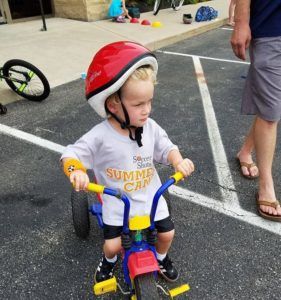
« Riding a scooter – if available, have the kiddo practice a 3-wheeled scooter whether it be in the driveway, neighborhood, or park. Once they get confident with being able to ride a scooter without falling off, work on coasting or gliding by having them do a big push and then try to keep their foot off of the ground for as long as they can. Eventually, they should be able to progress to a 2-wheeled scooter.
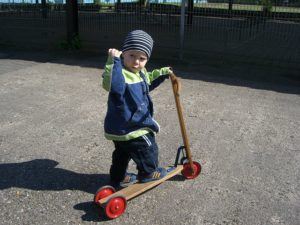
« Ball skills – practicing catching, throwing, and kicking helps build strength, coordination, and balance. At this age, work on throwing overhand and underhand while hitting a target from 12 feet away, catching a small ball with hands only from at least 5 feet away, bouncing and catching a ball, kicking a ball 12 feet in the air (ex: kickball), and drop kicking a ball with direction (towards a target).
« Swing – at the age of 4 ½ years old, kiddos should be able to swing by pumping their own legs. To help kiddos learn to pump their legs, stand in front of them with your hands held out as a target, telling your kiddo to “kick my hands with both feet at the same time”. Follow that by asking them to bend their legs backward. This will help improve their coordination.
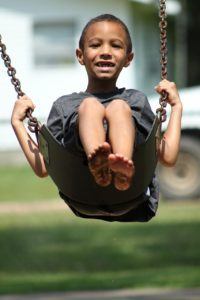
« Jump rope – jumping rope is a great activity that can be fun while challenging their strength, timing, and coordination. A child first learns to jump rump over a rope that is turned by someone else. If you do not have a second person to turn the rope, try tying the other end on a nearby surface; make sure it is not too low or too high. As this gets easier, try transitioning to self-turned jumping rope, which requires more attention, timing, and coordination. A child should be able to do this around age 5.
If you are unsure of what your child should do and when, complete a free screening of your child at http://checklist.abcpedatrictherapy.com.
Visit our website https://www.abcpediatrictherapy.com for more information on child development.
Read MoreThe following are several different activities that you can do at home, both inside and outside, for your 2-3 year old kiddo.
Inside Activities:
« Practicing Stairs – walking upstairs reciprocally (one foot passing the other), progressing from use of one handrail to no handrail. To make it fun, make it into a game with building blocks or with putting a puzzle together.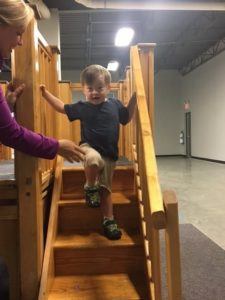
« Standing on One Leg – improve their balance and hip strength by practicing standing on one leg for 3 seconds. First start without hands on their hips, and progress towards hands on hips as this makes it harder. To make it more interesting, try doing this while playing a game (stopping every 3 turns), coloring at a table while standing, or watching TV for example.
« Alligators – this is a simple hip strengthening exercise that will help improve their stability and strength for stairs, balance, and walking. You have them start by laying on their side, slowly raise the top leg, and slowly lower. To make it more fun, have a stuffed animal between their legs, and “chomp” down slowly as if they are an alligator.
« Bridges – this is a simple core and leg strengthening exercise. You have them start by laying on their back with knees bent, lift their bottom up off of the ground (forming a “bridge”), and slowly lower down. To make this more fun, have a small animal, car or favorite toy pass under each time as they “open” and “close” the bridge.
Outside Activities:
« Going down the slide – whether at home or at a park, the slide can be a fun activity for kiddos. At this age, a kiddo should be able to climb up the jungle gym and go down the slide by themselves while being able to sit upright without falling over.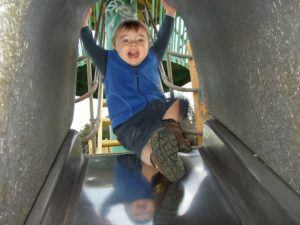
« Soccer – practicing kicking a stationary ball towards a target, whether that be you (caregiver), another kiddo (friend/sibling), a soccer goal, or some other creative target from about three-to-six feet away.
« Playing catch – practicing catching a larger ball by bringing/trapping to their chest rather than with just their hands, and progress towards hands-only after they get consistent with trapping. This can be made into a game with basketball, catching stuffed animals, etc.
« Bike Riding – practicing bike riding can be done inside or outside depending on the space available. At this age, a child should be able to ride a small push bike; a bike without pedals where the kiddo uses their feet on the ground to move themselves. They should also be progressing towards the use of a tricycle around the age of 3. This activity is fun while helping to build strength and coordination.
If you have questions about what your child should be doing and when visit http://checklist.abcpediatrictherapy.com for a free screening.
Visit our website at https://www.abcpediatrictherapy.com for information on child development.
Read More
THERAPY IS PLAY!
Occupational therapy from a parent’s perspective: Why is the therapist playing with my child, and why am I paying for someone to play with my child when I could do this at home?
Occupational therapy from an OT’s perspective: How can I make this fun and purposeful, while giving this child a challenge?
OT’s have a method to their madness, a purpose to their play, an underlying skill to work on with every move. We just disguise therapy with play…because let’s face it…if a child thinks they are “working” they won’t be as motivated to participate!
Play is a child’s number one occupation; it is intrinsically motivating and FUN! What children don’t know? It is also a learning experience. Children are like sponges; as they interact with objects, their environment, and the people around them, they are soaking up all of the wonderful skills needed for future occupations such as being a student, completing chores, and playing with friends!
So…what’s the difference between play at home and play at therapy?
As occupational therapists introduce toys and play into their sessions, we are continuously looking for the just right challenge for your child. This means we are allowing them to learn new skills with our support, but without overwhelming them in the process. As we assess their skill level during play, we are also able to provide modifications to the activity and are able to grade the level of difficulty up or down based on your child’s specific ability.
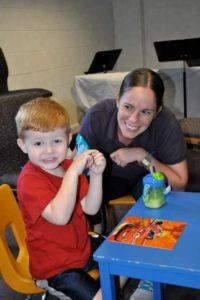
Examples of this could be: sitting on a therapy ball while playing a game to activate postural muscles, coloring on a vertical surface to improve shoulder stability, or using tongs to pick up game pieces rather than their hands for fine motor control and strengthening.
Each toy and activity used during therapy is specifically chosen to cater to the individual needs and abilities of your child. When choosing a toy or activity, some of the things occupational therapists consider are:
-What does their grasp or release on objects look like?
-How is their postural control and shoulder stability?
-Are their movements intentional and fluid, and are they able to move their arms and legs both individually and simultaneously?
-How are they manipulating, exploring, and interacting with the toys? Is their play purposeful and functional?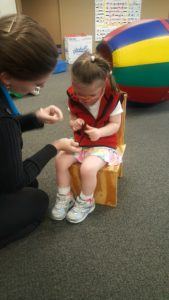
-Are they aware of their environment and the others around them?
-Are they able to follow multi-step directions?
This is just a glimpse into what play looks like from an OT perspective. That’s why we allow the last few minutes of our sessions for Q&A with you, the parents! We are a team, and we want you to understand the goals for your child, and the path to master those goals. The home exercise programs created for you and your child are imperative to seeing the most success. We encourage you to ask questions when you are uncertain about anything!
Read More
Look what I can do!
At 0-3 months old, I will be able to start holding my head up when placed on my tummy. At first, I will be looking straight down, but with practice, I will be able to lift it even higher. Make sure my arms are under me so I learn to push up.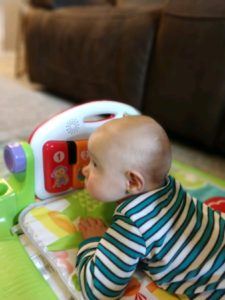
At 3-6 months old, I will be able to push up more through my arms so I can really look around. I will be able to reach for toys and bring them to my mouth. Make sure I have plenty of toys!
At 6-9 months old I will start to move around while on my tummy. I will pivot and I may learn to move backwards before I am strong enough to move forward. I love to explore!
At 9-12 months old I will be strong enough to push up onto my hands and knees for crawling. Watch out, world! Here I come!
Tummy time should always be supervised and done when your child is awake.
Tummy time should be done when your baby is happy – not tired or hungry.
Tummy time should not be done right after your baby has eaten. This can put pressure on a full tummy and cause your baby to spit up.
Perform tummy time for short intervals (10 minutes), several times per day.
Use a nursing pillow or small towel roll under the arms. This takes some of the weight off of the arms, making it easier to lift his head.
Use toys and music to make it fun.
Get on the floor so your baby can look at you.
Hold your baby on your chest, facing you, and recline back so you are face to face.
Babies loves to hear your voice and see your face!
When and how much?
Tummy time is needed every day and should begin the first day you bring your infant home from the hospital.
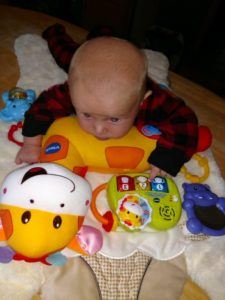 Start with just a few minutes at a time, several times per day. Gradually build up, as your baby is able to tolerate more.
Start with just a few minutes at a time, several times per day. Gradually build up, as your baby is able to tolerate more.
Why tummy time?
Tummy time helps your baby get stronger in order to develop his skills.
Tummy time is needed to promote motor skills such as sitting up and crawling.
It strengthens the hands for holding onto toys or a bottle and helps to develop vision.
Babies who do not spend time on their tummy are more likely to have delays in their motor skills.
What if my baby doesn’t like it?
Hang in there and keep trying! With practice and toys to make it fun, your child will learn to enjoy it.
Keep that perfectly shaped head
Babies who are placed too much in swings, car seats and on their backs and not enough on their tummy can end up having a misshapen head.
Putting your baby on his tummy several times throughout the day keeps pressure off of the back of the head and keeps that perfectly round little head.
Avoid having your baby sleep in a swing or car seat, if you can. Babies should be placed on their backs to sleep on a flat surface. The flat surface allows your baby to turn his head to either side, helping to form the perfect head shape.
Tummy time should be fun and provide learning opportunities.
Remember to place your child on their back to sleep.
If you have questions about your child’s development, visit https://www.abcpediatrictherapy.com. We love to help!
Read MoreFor a child, getting themselves dressed is a big accomplishment and can boost their self-esteem. There are many skills that are needed to get dressed including fine and gross motor skills, bilateral integration (the ability to use both sides of your body together with coordination), sequencing (putting skills together to achieve a final task), strength, motor planning (the ability to determine and carry out a series of motor actions), and sensory processing.
Children can begin assisting with dressing before their first birthday and gain independence in the upcoming years before being able to fully dress themselves at age 5.
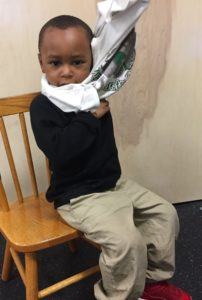
What dressing skills should my child be able to do and at what age? The answers are below. Encourage the skill prior to the age it should be mastered. At first you will have to completely do the skill for your child. Talk to your child telling them all the steps to complete the skills. Progressively ask your child to help you with each step. Praise your child for their help with the task and successful completion. You will be teaching your child pride, sense of accomplishment and trust that you think they can. Great job parent!
By the time a child is 1 years old:
Your child should be able to take his shoes and socks off.
He/she should push their arms in sleeves once the shirt is placed over their head.
A 1 year old should push legs into pants when the pants are held for them.
By the time a child is 2 years old:
He/she should be able to help pull pants down.
A 2 year old should remove their own jacket.
By the time a child is 3 years old:
A 3 year old should be able to take off pants.
He/she can button and unbutton large buttons.
Your child will unzip and zip jacket once zipper is started.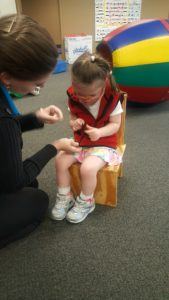
Three year old’s put on socks and shoes by themselves.
By the time a child is 4 years old:
He/she should be able to put on shirt and pants independently.
A 4 year old can take off his/her own shirt.
At this age, your child can snap, button, zip, and buckle a belt.
Putting socks on correctly is a skill at age 4.
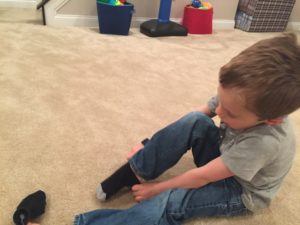
By the time a child is 5 years old:
Your child should be able to dress and undress himself including all fasteners and tie his shoes! You now have extra time for you!!
Continue to challenge your child now that you know what skills they should be doing and when. Push their potential to be independent. Praise their successes!
This is the way to raise a happy, confident child!!
If you need help teaching your child skills reach out to ABC Pediatric Therapy Network. We are here for you! If you have questions, call us or visit our website at https://www.abcpediatrictherapy.com.
Read More
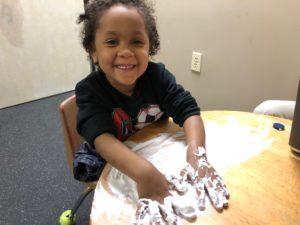
Winter time can be difficult for kids and parents, especially kids with higher sensory needs. Being stuck inside more means less time outside and fewer options for movement activities. Here are some ideas to get your kids moving and to keep them busy during those long winter months:
– Check out your local library for different classes they have – they often have story time and other free programs
– Many fast food restaurants or indoor malls can have play areas where they can climb and slide
– Stores that sell playground equipment will often have the option to play on equipment indoors for a small cost
– Children’s museums or other museums – some of them have a cost and others are free to the public
– Cooking or craft classes
– Indoor play cafes
– Nature centers
-Play in the snow!
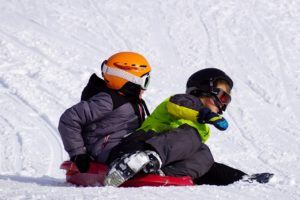
– At home:
o Make an indoor obstacle course
o Science experiments
o Make homemade playdough
o Indoor snowball fight using wool dryer balls or rolled up socks
o Rice and bean bins
o Shaving cream, kinetic sand, play dough, putty activities
o Indoor scavenger hunt
o Create structures using marshmallows and toothpicks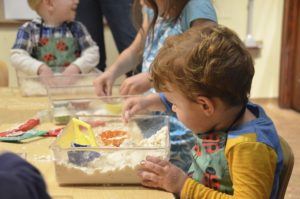
o Build a cardboard house
Continue to challenge your child’s development everyday. If you have any concerns, visit our website https://www.abcpediatrictherapy.com or give us a call. We are happy to help!
Read More Skip to content
Skip to content
